
By Lance Hodgins
The game played between Melbourne Grammar and Scotch College in August 1858 was umpired by State cricketer Tom Wills, who went on to draft the “Melbourne Rules” the following year. Several clubs were immediately formed and games were played with increasing frequency in the major parks of Melbourne.
Wills took the game to Geelong and it spread to several large provincial centres. By the boom years of the 1880s, Melbourne’s inner suburban football teams were promoting their local communities in front of crowds which exceeded the rugby and FA Cup finals in England.
That famous 1858 match in Yarra Park between Melbourne Grammar and Scotch College is already entrenched in the history of Australian football.
Amongst the enthusiastic boys cheering for Scotch on those three days would have been the Barker brothers – John and Richard. At 12 and 13 years of age, they both wished that they were a couple of years older and so could have been chosen in the forty who were playing so valiantly for their school.
They admired their new headmaster, a tall athletic Scot called Alexander Morrison, who had sanctioned and encouraged that first match.
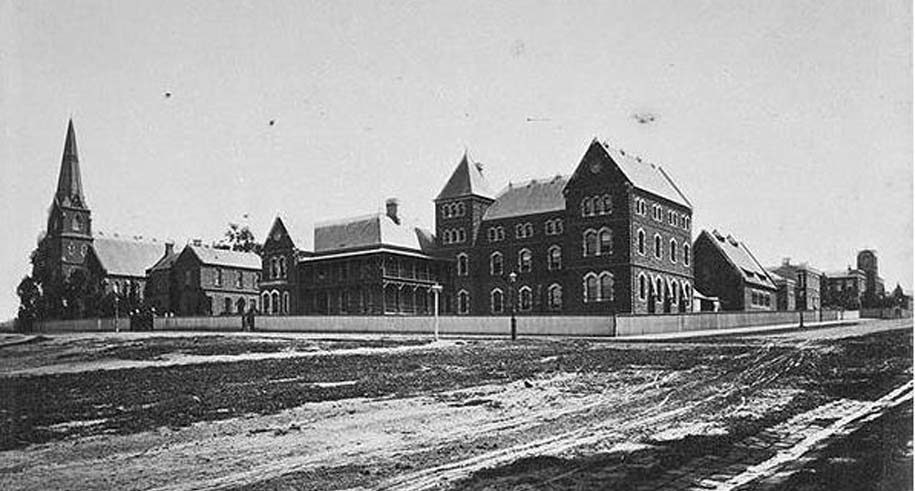
Another boyhood hero was their young Scottish chemistry and natural history teacher, John McAdam, who umpired the game alongside Tom Wills. His distinctive long red hair and beard became legendary as he followed the play amongst the gum trees.
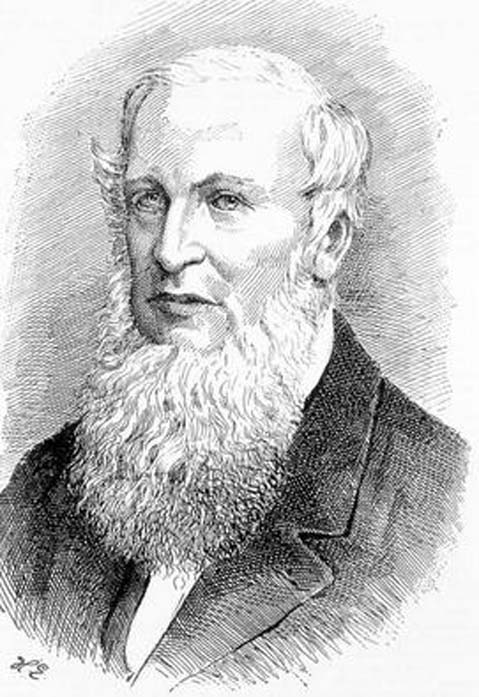
The Barker boys were the two oldest sons of John Barker who owned the Barrabong Station at Cape Schanck as well as extensive properties at Boneo.
John Barker snr was a wealthy lawyer who had been admitted to the bar in 1851. He chose, however, to serve as the Clerk for the first Victorian Parliaments, a position he held with distinction until his death 40 years later.
It was only natural that the sons of such an influential person would be sent to Scotch College, the oldest boarding school, to mingle with the sons of other professionals, businessmen and administrators of the young colony.
At that time, Scotch was settling into its new property on Grey and Lansdowne Streets, Eastern Hill – where the Peter McCallum Cancer Centre is today – between St Patrick’s Cathedral and the Treasury Buildings. The Treasury Gardens became the playground for the boys of the school.
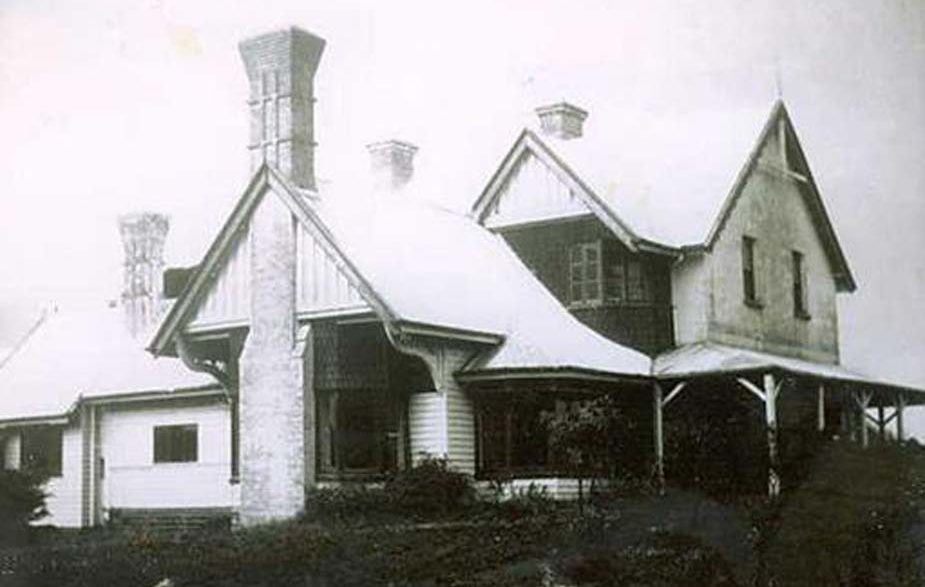
Of greater importance, however, was the College’s proximity to Yarra Park. A five minute walk and the teenage John and Richard were in the middle of the frantic activity that was unfolding there every weekend during the winters of their schooldays.
In the years after 1858, school matches continued to flourish and the older Barker boys were in their element. Furthermore, they could now watch the exciting club matches which were being held in the Park with increasing frequency, some in front of several thousand spectators.
In 1865, John jr completed his education and returned home to Barrabong to manage the peninsula properties for his father, who was thoroughly occupied with parliamentary matters.
Richard came home two years later, leaving the much younger brother William to finish his studies at Scotch.
When John jr returned to Melbourne to pursue his own legal career, Richard took over as property manager and dwelt on the day when young William could come home from school and join him. That day finally arrived in the early 1870s and the two boys decided to embark on an amazing adventure.
They would stage a football match on the Mornington Peninsula!
The main task was to assemble two teams of likely lads. The newly-created Shire of Flinders contained about 200 males between the age of 15 and 30. Although the towns were still reasonably small, there were plenty of pioneer farmers taking up properties under the government-sponsored settlement schemes of the day.
Using their contacts and influence, the Barker boys had no trouble finding enough fit young men from Boneo to Balnarring who were willing to give the new rules a go.
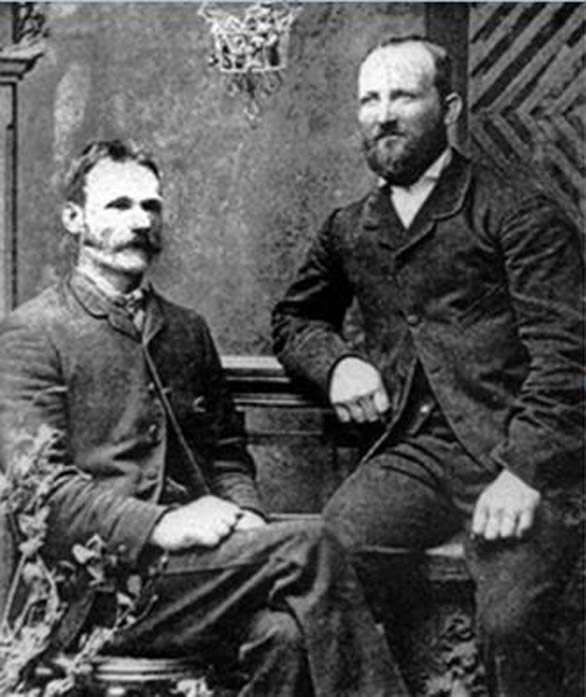
One such participant was James Connell, of Moorooduc who, in his later years, remembered taking part in the match – but not the exact year. Born in 1853, he was a young man at the time, and about to embark upon his extensive grazing activities in the Tuerong district.
The match was played at Balnarring and the teams represented Flinders and Balnarring. Each team had a Barker serving as its captain and, no doubt, also acting as advisor and arbiter of the rules. Their influence was short-lived, however, as the game was beset with confusion and frustration from the start.
Whereas the Melbourne football clubs had spent 15 years writing and refining the rules of the new game, it was still a learning experience for those who lived beyond the reach of the railway and other easy means of communication.
The match was only ten minutes old before it broke down. Arguments led to fisticuffs, and the game rapidly descended into little more than an extended brawl which, in Connell’s memory, was “enjoyed” for the remainder of that afternoon.
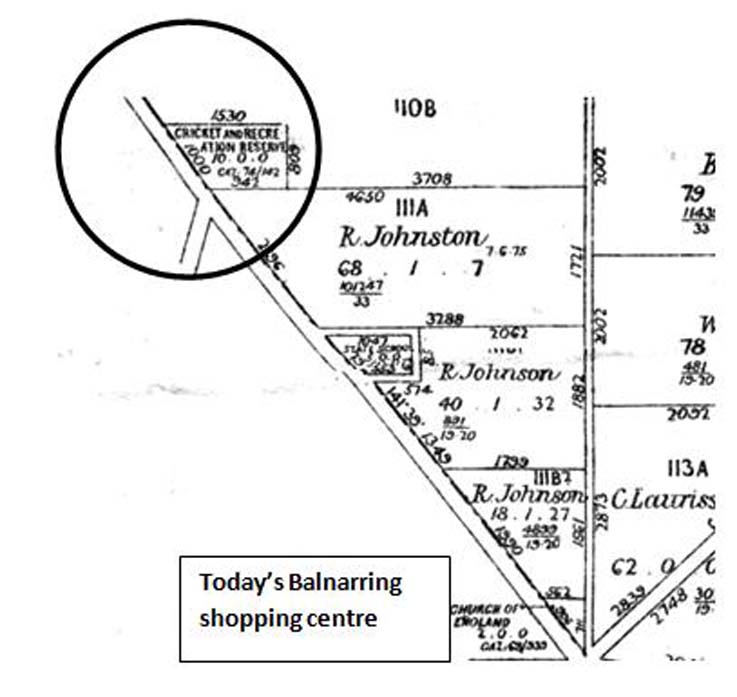
The dreams of the Barker brothers would have been shattered. The local football scene fell silent.
It would be a few more years, and from a different source, before a football match would again be played on the Mornington Peninsula.
In the same year as the 1858 match between Melbourne Grammar and Scotch, Mornington got its cherished pier – a 46 metre long structure at an estimated cost of almost £9,000. The pier quickly fed into the social and economic heart of the Mornington Peninsula, with fishing boats, supply boats, paddle steamers and twice-weekly ferries full of visitors driving the growth of Snapper Point.
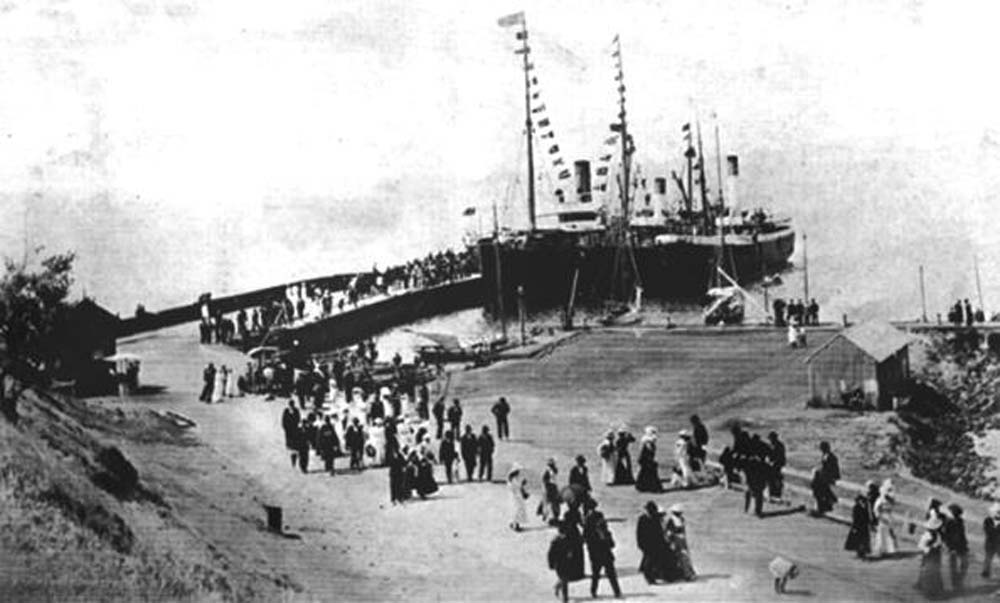
Mornington rapidly became the major commercial and legal centre for the entire Peninsula and, by the 1880s, it was an exciting place to live in. Over 500 residents thought so – three times the number who lived in its nearest neighbour, Frankston, which had yet to be joined to Melbourne by rail.
The wealthy of Melbourne built mansions along the coast – Beleura, Sunnyside and Manyung – and in the town – Morven Manor and Sutton Grange. Main Street was filling up with the substantial brick buildings of merchants, traders and administrators.
There were several hotels. On the approach to town sat the Tanti, the original hotel with its nearby saleyards. The Mornington had moved to Main Street and become the Cricketers’ Arms, later the Grand next door. The Royal and Kirk’s graced the Esplanade.
There were several schools to choose from. In 1878, the original primary school moved into new premises in Vale Street, where it remains to this day.
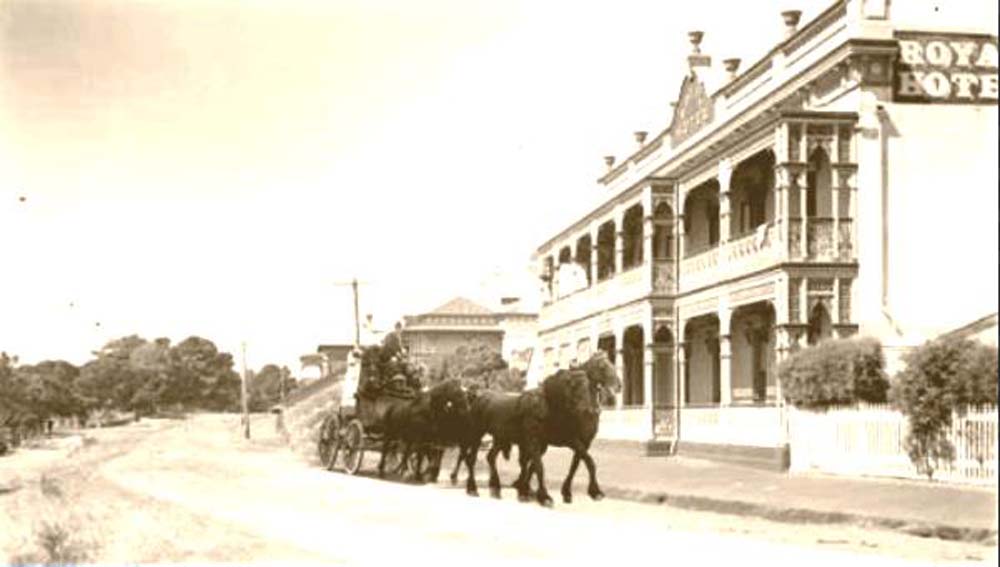
A second school served the children of the “Green Island” (Osborne) settlement around Benton and Craigie Roads. By the mid-80s, this School had proved so popular that it moved from near Benton’s Square to its present location in Craigie Road.
In the same year as Vale Street, B T Backhouse started a boys’ Grammar School in Brewery (Nunn’s) Road, and then moved into the grander surroundings of Beleura.
Finally, in 1881, The Mornington Academy was born. Like the Grammar School, the Academy proudly offered “first class teaching to higher levels, boarding, and a healthy seaside environment”.
And so the stage was set. It was only a matter of time before these schools would meet in friendly rivalry on the sporting field.
In March 1882, Mr Gibson-Wylie’s Academy and the State School met in a cricket match. This was so successful that the two schools considered joining forces to present a challenge to the older boys at Mr Backhouse’s Grammar School.
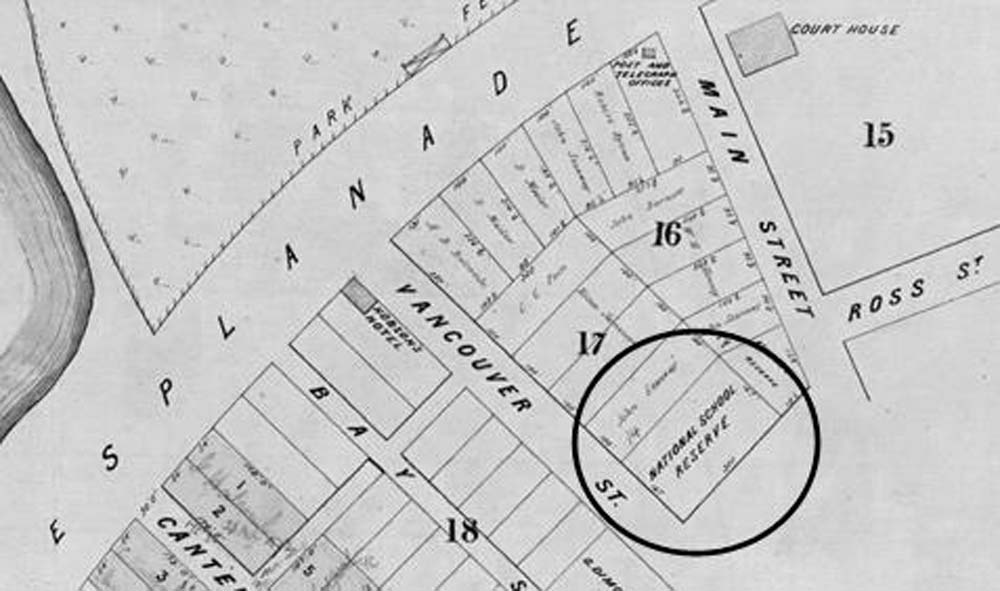
In May 1882, The Academy played a one innings match against the Green Island (Osborne) State School and a most exciting and interesting game resulted in a win for The Academy. The match took place “on the grounds adjoining the Church of England”. This may have referred to the newly-created reserve on the Esplanade at the end of Main Street. To be “adjoining”, however, probably meant the area directly opposite the Church set aside years earlier for a primary school. Today the site is covered by the Shire Offices and Library.
A return match on Green Island’s turf took place on the Queen’s Birthday holiday. This time over two innings, The Academy once again ran out easy victors – by an innings and 4 runs after J Jones scored 32 of the Academy’s 59 runs.
The Academy’s headmaster, Hugh Gibson-Wylie, was well aware of the good publicity gained for his school by these games – especially when he was victorious. He was in direct competition with Backhouse’s Mornington Grammar for senior students and both charged at least £40 a year for full board and tuition.
Emboldened by his cricket success, Gibson-Wylie began to consider the prospect of carrying over these sporting activities onto the football field. That winter, however, would be too soon. If the school was to field a football team then it had to be done properly, with careful preparation, so his Academy boys could perform with distinction.
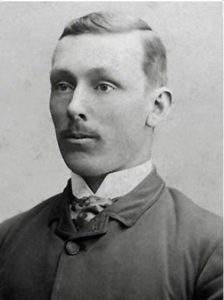
It was not until the following winter of 1883 that negotiations for an opponent were finalised. Vale Street State School had recently appointed a student teacher Joseph Worrell who was a very capable local cricketer and all-round sportsman. Worrell took up the challenge from the Academy and arrangements were made.
On Wednesday 15th August 1883, the peninsula’s first complete recorded game of Australian football took place.
The match was held on the grounds near the Church of England. A most exciting game saw Gibson-Wylie’s Academy prove too good for their opponents, scoring three goals to the State School’s one.
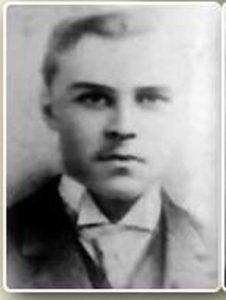
Spirits ran high amongst the jubilant Academy boys as they celebrated their victory, showering adulation on their best players – Caldwell, McLellan, Jones, and Walker. The State School team was led by student teacher Joseph Worrell, and capably served by Cavell, Everard and Martin.
Joseph E Worrell jr was somewhat of a legend already in Mornington. His father had been the State School head master for almost twenty years, acting as the Shire Secretary in his “spare” time. At the age of 12, young Joseph would help his father post up the Shire books. Two years later, on the sudden death of his father, the 14 year-old orphan became the sole carer for two brothers and a sister.
Joseph was immediately appointed as the Shire Secretary – reputably the youngest in the Commonwealth – and a year or two later became Clerk of Works under the Shire Engineer. Barely out of his teens, and perhaps looking for a career change, Worrell accepted the position at Vale Street as a pupil teacher in 1883. In later years he captained the Mornington Cricket Club, was Secretary of numerous companies, ran a successful real estate agency in Mornington, and was President of the Shire – all before his untimely death at 40 years of age.
Only six months before his death in 1902, Worrell was inspecting the drainage at the “new” football oval at Alexandra Park with two of his fellow councillors, and thoughts would have turned to that schoolboy game twenty years earlier. Councillors McLellan and Walker would have reminded him that they were on the other team, the victorious Academy.
James Caldwell, aged 12, was the Academy’s star player in that match. He was the eldest son of the minister of St Andrews Presbyterian church. Nine years later, James was to lose his life along with two of his brothers and 9 other members of the Mornington Football Club, in the famous boating tragedy as the team returned from a practice match at Mordialloc.

The Academy/Vale Street match of 1883 throws up some parallels to that schoolboy game between Scotch and Melbourne Grammar a generation earlier. History was doubtlessly repeating itself, but it was now a better developed and more clearly organised game that was being introduced into this new environment.
Ironically, a potential spectator at that Wednesday afternoon match was Dr Alexander Morrison, the long-reigning headmaster of Scotch College. Soon after that famous game in 1858, Morrison had built a magnificent home on the Esplanade, Craigie-Lea, from where he began a lifetime of involvement in the community affairs of Mornington.
Dr Morrison would have found the two Mornington headmasters to be quite interesting characters.
James Eccleston Walker had just taken over at Vale Street in 1883. He was a “forceful and determined” man, a strong manager, and a disciplinarian who achieved excellent results for his school. Walker left an indelible mark on his school inspector and, as it turns out, an even more marked one on local sporting history. On his retirement several years later, he returned to live in Vale Street where his house was eventually demolished and the land became part of the School property.
On the other hand, the Academy’s Hugh Gibson-Wylie had arrived in Mornington two years earlier after several attempts to run his own school. After his Clyde House Academy in Brunswick was declared insolvent, H G Wylie moved to Sale where he ran “a private Academy” for a couple of years before turning up in Hamilton as the Secretary of the Alexandra College for Ladies.
The opportunistic Wylie must have had his eye on Mornington and, in 1881, a suitable building became available for rent. A B Balcombe, of “The Briars”, had built a 17-roomed mansion on the Esplanade, close to Kirk’s and The Royal, and between the Mornington Park and the Church of England.
It had been used for some time as a boarding house – not too successfully it seems, as its tenant became insolvent in 1875 and the elaborate contents were sold at auction. When Balcombe died in 1877, the property was bought by William Armstrong, the Clerk of Petty Sessions, who already owned several nearby houses. In 1881, the new owner of the boarding house was Wm Irvine, who found a willing tenant with a new purpose in the schoolmaster Wylie.
It was an excellent place for a school. Apart from the outstanding location, the main building was about forty feet in length and thirty wide, subdivided into a dozen rooms. At the back, only a few strides away, was a long wooden building – thirty feet by fourteen – highly suitable as a schoolroom.
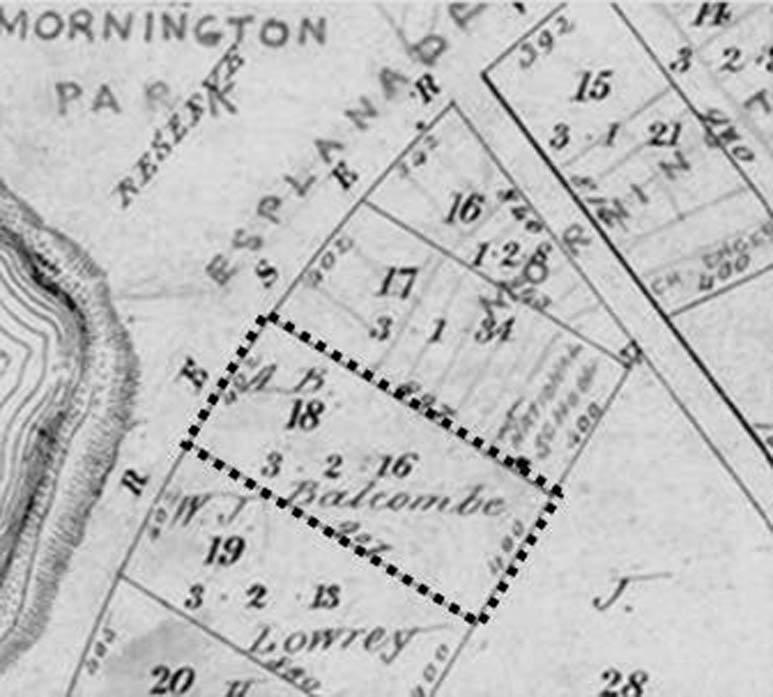
In 1883, the Academy was in its third year and, largely through its sporting endeavours, beginning to make a name for itself.
On the night of Thursday October 11th, H G Wylie had retired to his bed at the usual hour and was reading a book, dozing a little – perhaps thinking of the “glory” of that magnificent football match eight weeks earlier. It was quiet in the House as term four had not yet started and only one boarder had taken up early residence.
Half-asleep, he awoke with a start to find one of his wife’s dresses, which had been hung near a candle on the bedside table, in flames. The wallpaper and part of the ceiling were also alight, and Wylie had just enough time to alert his wife and the sole boarder and hustle them outside in their night clothes.
A crowd had quickly gathered in response to the rapid ringing of the Church bell. In no time the old building was well alight and, in the absence of a town fire brigade, was never going to be saved. The roof caved in, the walls crashed down, and by morning only a brick chimney and the smouldering interior remained of the two buildings.
The buildings were insured by its owner, Mr Irvine, as were the contents by Mr Wylie. Nonetheless, the Academy was finished.
Wylie moved on to New South Wales, where he started a school in Junee. After losing his first wife, he remarried and started the Wagga Wagga Grammar School in 1890. When his young son died quite suddenly at the age of two, Wylie was so distraught that he developed severe internal disorders from which he never recovered. He passed away on Easter Monday 1893 at the age of 53 years.
For the Mornington boys who played in the historic Vale St/Academy game in 1883, however, life went on. They would soon become young men and play their part in shaping the life of their town and beyond. Within four short years the Mornington Football Club would ring with their names and the memories of those schoolboy days.
Whereas the Melbourne schoolboys were followed in a few weeks by adult matches, it took four years for the same thing to happen on the Peninsula. The first match – between Frankston and Mornington – took place on June 18th 1887, and when Hastings joined the fray two years later there were still only three regular local teams.
It was to be a long and tortuous 20 years before organised football came to the Peninsula. The Mornington Peninsula Football Association was finally formed in 1908 and the story of those years leading up to it is an interesting one full of jealousy, bickering and dissension.
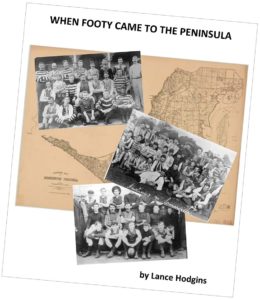 This story is an extract from the book When Footy Came To The Peninsula by Lance Hodgins.
This story is an extract from the book When Footy Came To The Peninsula by Lance Hodgins.
Copies of the book can be obtained for $15 by calling Lance on (03) 5979 2576.
Peninsula Essence – September 2017





